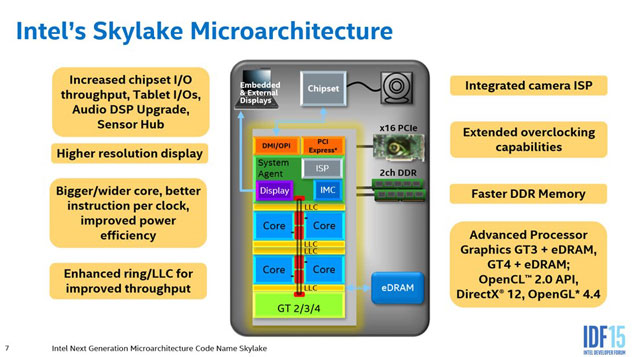Skylake Users Have Until July 2017 To Install Windows 10 Or Lose Support From Microsoft

In a blog posted yesterday, Microsoft revealed that it will no longer support its older operating systems on newer hardware platforms. Despite the fact that Extended Support for Windows 7 and Windows 8.1 doesn’t end until January 14th, 2020 and January 20th, 2023 respectively, Microsoft will consider those operating systems unsupported if you’re running Intel Skylake (or newer) hardware. That’s right, if you’re one of those folks that loves Windows 7, hates Windows 8.1, and has no intention of upgrading to Windows 10, Microsoft is about to make it a lot harder to be stubborn.
Microsoft writes:
Through July 17, 2017, Skylake devices on the supported list will also be supported with Windows 7 and 8.1. During the 18-month support period, these systems should be upgraded to Windows 10 to continue receiving support after the period ends. After July 2017, the most critical Windows 7 and Windows 8.1 security updates will be addressed for these configurations, and will be released if the update does not risk the reliability or compatibility of the Windows 7/8.1 platform on other devices.
The wording about releasing critical updates as long as they don’t interfere with the reliability of legacy hardware leaves Microsoft a lot of wiggle room to simply say “We won’t release a security update for your Skylake configuration,” which is quite troubling to say the least.

In the future, Microsoft will tightly interweave processing hardware with the Windows operating system, and Microsoft explains that Intel’s upcoming “Kaby Lake” silicon will only be supported on Windows 10. That same restriction applies to AMD’s “Bristol Ridge” and Qualcomm’s incoming Snapdragon 820 SoC.
Microsoft also explains that operating systems like Windows 7 were never designed to properly take advantage of today’s latest technological advances in PCs:
Windows 7 was designed nearly 10 years ago before any x86/x64 SOCs existed. For Windows 7 to run on any modern silicon, device drivers and firmware need to emulate Windows 7’s expectations for interrupt processing, bus support, and power states- which is challenging for WiFi, graphics, security, and more. As partners make customizations to legacy device drivers, services, and firmware settings, customers are likely to see regressions with Windows 7 ongoing servicing.
Microsoft Windows Chief Terry Myerson lists other reasons for this change in policy, stating, “Compared to Windows 7 PC’s, Skylake when combined with Windows 10, enables up to 30x better graphics and 3x the battery life – with the unmatched security of Credential Guard utilizing silicon supported virtualization.
“We and our partners are continuing to invest, innovate, and update to drive continued performance improvements across Windows 10 and Skylake devices.”
So what say you, HotHardware readers? Is Microsoft making the right move here by cutting off support just because of the hardware platform you choose?

